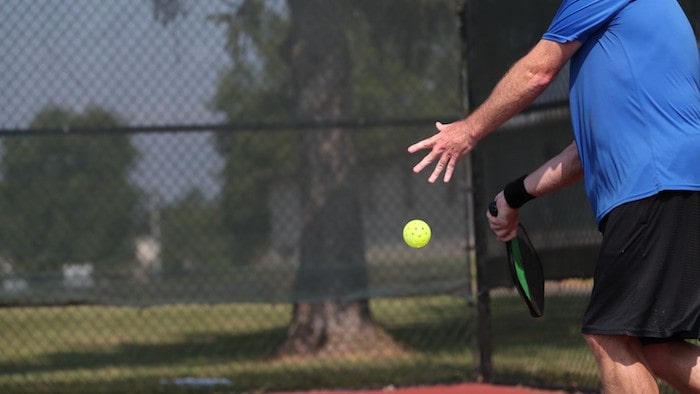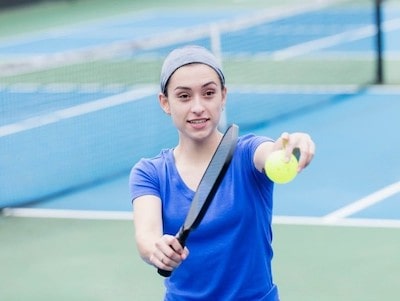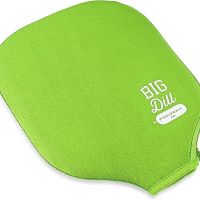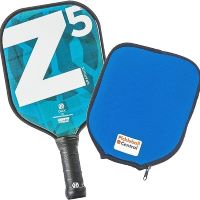One of the key aspects to pickleball success is mastering proper hand signals to communicate with your opponent during gameplay. Knowing the right-hand signals for situations like scoring points or when changing sides can make all the difference in how well you play.
We will discuss the importance of proper pickleball hand signals, how they are used, and provide helpful tips on using them effectively during a match.

In addition to helping players understand what each signal means, it will also help them learn how to read their opponents’ signals properly, so they can stay one step ahead in the game.
Pickleball is an exciting sport that requires quick thinking and smart communication between opponents; understanding these important hand signals will help you enjoy this thrilling game even more!
You Might Also Like:
What Are Pickleball Hand Signals?
Pickleball hand signals serve as an important way for players to communicate without speaking during the game.

They also help keep the game safe by ensuring that all players understand what is happening on the court. The most common pickleball hand signals include:
- Raising one arm up in the air to indicate serving direction.
- Pointing at where a ball has landed.
- Putting both hands together above your head when it’s time to switch sides.
- Raising one arm with two fingers extended for a double bounce.
- Using an open palm facing down for an outcall.
- Crossing arms over your chest if you want to challenge a call from another player.
Knowing these simple pickleball hand signals can make playing this fun sport even more enjoyable!
1. The Switch
It is used when one player wants their partner to switch sides with them while they’re playing a point (or rally).
Furthermore, it also helps to keep track of whose playing where. This also helps ensure that everyone gets an equal amount of time on both sides.
To make this signal, one player holds up one arm straight out toward his/her partner. While pointing in the direction he/she would like them both to move towards (either left or right).
The other player then acknowledges this by putting up his/her arm as well before switching positions with their partner accordingly – usually before beginning another rally!
2. The Stay
The Stay signal means when one player decides not to move and remains on the side.
To make this signal, simply hold up your arm in front of you with your palm facing downwards as if telling someone “no” or “stay here”. Indicating that neither person should move from their current location until further notice.
3. Fake Switch
Fake switch hand signals, when playing singles or doubles games. As they allow you to create an element of surprise on the court by switching up your strategy without verbalizing it out loud.
The idea behind these types of signals is that they let each player on the court know what type of play their opponents may be set up for them.
Pickleball Hand Signals for Line Call
A common line call signal is holding up a flat palm at shoulder level with fingers pointing in the direction of where you believe the ball landed.
Another signal involves holding up your non-dominant arm straight out, with both fists clenched, and then extending one index finger in either an upward or downward motion that indicates which side of the net you believe it hit. When unsure if a ball was good or not, players can use their hands to make an “X” formation above their heads to indicate they are uncertain.
If another player makes a line call before you do, it’s important to respect this call and move on with the play rather than dispute it.
However, if two people disagree about where the ball landed, then both should point in opposite directions until an umpire decides who’s right.
Additionally, when attempting to make a line call, always be sure that all other players hear your voice clearly. So there isn’t any confusion about your decision or who made it.
Pickleball Hand Signals for in or Out
Pickleball hand signals indicate whether a ball is in or out during a game.
When indicating that the ball is in, the line person will typically hold both hands up, palms facing outward with fingers spread out wide. This signifies that the ball has landed within bounds and the point should be awarded accordingly.
On the other hand, when signaling that a ball has gone out of bounds, they will usually cross their arms over their chest with each arm forming an ‘X’. This motion tells everyone watching that the point should not be awarded, as it was not within bounds at any time during play.
These simple yet effective pickleball hand signals ensure smooth communication between players and officials throughout a game of pickleball!
Why Are Hand Signals Used in Line Calls?
Hand signals in pickleball line call, ensure fair and accurate play. They help players to make quick decisions on the court while avoiding verbal arguments and disputes.
Hand signals provide a non-verbal way of communicating between players, referees, and spectators. It also helps maintain a competitive atmosphere as players learn to trust each other’s judgment when making line calls.
Hand signals are also important for safety reasons since they allow players to alert each other of potential hazards on the court such as objects or people in their vicinity while playing.
Advantages and Disadvantages of Switching Hand Signal
While some rules are universal, one rule that varies from court to court is the use of switching hand signals.
Switching hand signals allow players to change sides during play without having to verbally communicate with their opponent. While this may seem like an advantage, there are both pros and cons associated with using this tactic.
Pros
- Increases communication between partners.
- Allows for more precise direction and instruction
- Enhances team strategy by allowing players to be more aware of their opponent’s intentions.
- It can help players become better overall pickleball players by understanding the game flow better.
Cons
- May cause confusion when switching from one signal to another in a match
- It can be difficult for new or inexperienced pickleball players to learn and remember all the different hand signals
- Takes time away from playing and strategizing, as the signals need to be discussed before each point is played.
Also, read our other blogs:
- Rules for serving pickleball
- In pickleball what is the kitchen?
- What is the pickleball double bounce rule?
FAQs
To dominate the net in pickleball, start by mastering your serve. Focus on developing a powerful and accurate serve that lands in the non-volley zone of your opponent’s court. Also, practice footwork drills to increase your quickness and agility. Next, work on developing good angles when hitting shots at the net. Move around the court quickly and anticipate where you need to be for each shot. Finally, focus on being consistent with your net play by drilling specific shots such as drop shots and volleys.
The most important shot in pickleball is the serve. The serve is the first shot of each point and can create an immediate advantage for one player over their opponent. Mastering the serve requires a combination of precision, power, spin, and accuracy. Additionally, players need to understand how to best use their serves strategically in order to gain an edge over their opponents.
To hit the pickleball where you want it to go, you need to focus on your aim and technique. Begin by standing in a comfortable position with your feet shoulder-width apart. Make sure to keep your body weight balanced on both feet as you swing the racket. To target specific areas of the court, use different swings. Such as a forehand or backhand stroke, and practice varying levels of power and spin.
To use pickleball hand signals, first raise your arm in the air and point at the court where you want to send the ball. Then point at yourself or your partner to indicate who will be serving or receiving next. Finally, hold up two fingers if you want someone on your team to hit a lob shot over their head.
Yes, there are. Players should always use the same hand signal for the same action to ensure everyone is on the same page. Additionally, players should not use too many signals at once, as this could be confusing to other players.
Pickleball hand signals should primarily be used when communication between players needs to remain discreet or when verbal communication isn’t an option due to noise levels on the court or the distance between players.
Well, It’s a Wrap!
Pickleball hand signals are an essential part of the game that help ensure fairness, safety, and fun. By using proper hand signals, players can communicate with each other in a clear and consistent manner.
The most important hand signal is the one to indicate whether a serve is in or out. Other important signals include those for deciding who serves first. Indicating when a player wants to challenge a call and signaling if the ball went past the non-volley line.
All players should be familiar with all of these hand signals, so they can play as safely and efficiently as possible.

I am the founder of BallSportsPro, a popular pickleball resource for players of all levels. I am a former professional tennis player, started playing pickleball in 2009 and quickly fell in love with the game. I launched BallSportsPro in 2018 to share my passion for the sport and to provide pickleball players with the latest news, tips, and gear reviews. Today, BallSportsPro is one of the most popular pickleball resources on the web, reaching hundreds of thousands of players each month. In addition to running the website, I also a regular contributor to Pickleball Magazine and a member of the USAPA Pickleball Ambassadors program.




